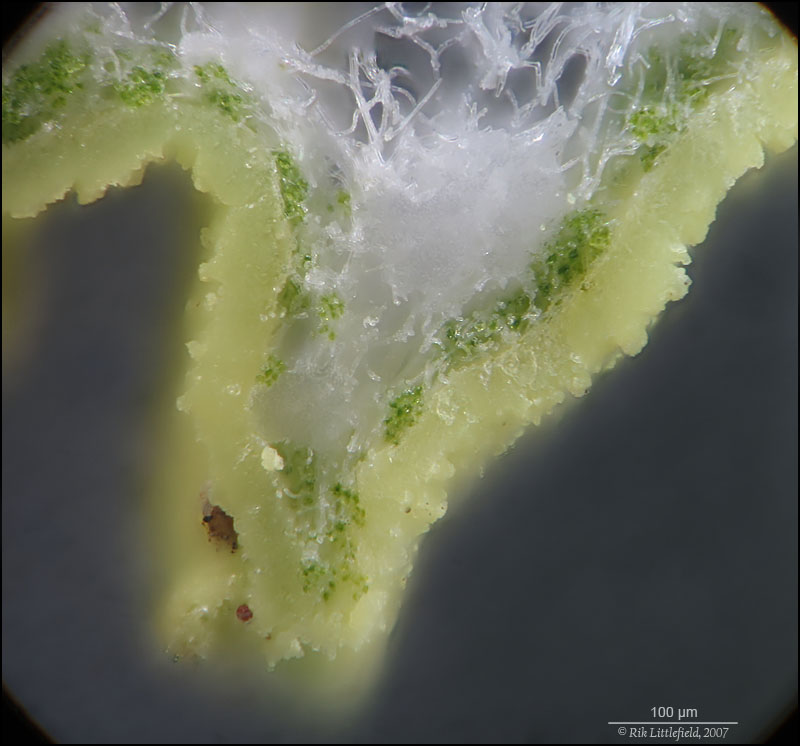
Inspired by Ralf's beautiful sections of lichens, I decided to try my hand with one of our local species.
This is "wolf lichen" Letharia vulpina (ref, ref), from a specimen that has been sitting on a countertop since I collected it several months ago. It is quite dry at this point, but I think this is not an unusual state for this lichen since it likes to grow in full sun on bare branches and stumps in dry conifer forest.
This section is cut from a medium-sized branch, about 1.2 mm average diameter. You can see that the structure consists of an outer layer that is a uniform yellowish color, a middle layer that is an irregular distribution of green-colored algae, and a hollow core that consists of colorless strands of fungus. The yellow color is somewhat water soluble and I believe is the chemical compound(s) that used to be used for dye and poison.
I read that reproduction in this species is non-sexual, through soredia not shown here. I don't know what the two brown spots are.
--Rik
Technical: Canon SD700IS point-and-shoot through 10X eyepiece, 20X NA 0.4 achromat objective. Top lit using dual-fiber halogen illuminator, ping-pong ball diffuser. Stacked, minor CA removed with PTLens. Handcut dry using single-edged razor blade under dissecting scope.
